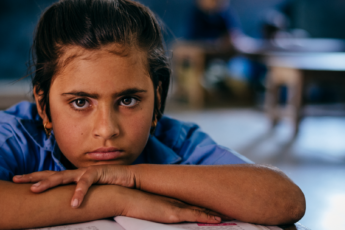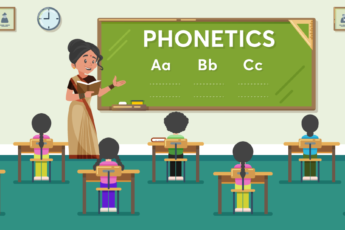Optimize Education with Adaptable Classroom Design
Gone are the days of rigid classroom designs with desks in neat rows facing a chalkboard. With the ever-evolving landscape of education, classrooms must adapt and evolve with the changing times. The design of schools is essential in determining the educational outcomes of students. By creating intermediate spaces and outdoor types of classrooms that serve as interactive zones, educators can enhance students’ educational experiences and promote their overall well-being.
The pandemic has led us to reconsider and reimagine the traditional school design. Instead, flexible designs that prioritize safety protocols and adopt a holistic approach to education have become the new standard. The pandemic has highlighted that students’ learning experiences are influenced not only by their teachers and lessons but also by the built environment around them. Therefore, it is crucial to recognize that effective learning takes place beyond the confines of classrooms.
📝Benefits of Adaptable Classroom Design
Teachers can facilitate various instructional methods and teaching styles by creating a flexible learning environment. As a result, students benefit from the ability to learn in a way that best suits their individual learning styles, whether through group work, independent study, or lecture-based instruction. Adaptable classroom design also encourages collaboration and communication among students, as they can easily move around the space and work with different classmates.
In addition, adaptable classroom design can also enhance student engagement and motivation. A well-designed learning environment can help students feel more comfortable and at ease, which can improve their concentration and ability to learn. In addition, when students feel that they have control over their learning environment, they are more likely to be engaged and motivated to learn.
📝Tips for Creating an Adaptable Classroom Design
Great classroom designs can adjust to the needs of multiple learning styles and levels. As a teacher, you want to be able to pivot quickly between different activities, and having the right space for each of those activities can keep your class on track. Here are some tips for making each of your classrooms adaptable:
- Think about the layout: Instead of traditional rows of desks facing the front of the room, consider creating different zones within the classroom. For example, you could have a reading corner, a group work area, and a space for individual study. The layout should be flexible enough to allow for different configurations depending on the type of instruction or activity taking place.
- Use flexible furniture: Tables and chairs on wheels can be easily moved and rearranged to support different activities and group sizes. Standing desks and adjustable seating can also be beneficial for students who prefer to stand or need to adjust their seating position for comfort.
- Incorporate technology: Interactive whiteboards, projectors, and tablets can all be used to enhance instruction and engage students. Ensure that the technology is easily accessible and integrated into the space to be used seamlessly.
- Consider lighting and acoustics: Natural light is ideal, but if that’s not possible, make sure that the lighting is adjustable and can be dimmed or brightened as needed. Acoustics can also be managed with sound-absorbing materials and carpeting to reduce noise levels and create a more comfortable learning environment.
- Allow for personalization: Allowing students to personalize their learning environment can help them feel more comfortable and in control of their learning experience. This can be as simple as providing a bulletin board or whiteboard for students to display their work or allowing them to bring in their own decorations.
- Create storage space: Teachers need to be able to quickly and easily access materials and resources, and students need space to store their belongings. Consider incorporating shelving units, cubbies, and lockers to provide ample storage space for everyone.
📝Changes in Indian Classrooms
Three teachers in a Delhi School are employing innovative teaching methods.
- Shilpa Raghuvanshi Chauhan, a postgraduate biology teacher at Salwan Public School, uses a game called stapoo to help students learn about the structure and functioning of the heart.
- Komal, a mathematics teacher at NK Bagrodia Global School, uses spaghetti sticks and marshmallows to teach students about geometric structures.
- Shalini Malhani of NK Bagrodia Public School teaches angles to students using gestures, pencils, notebooks, and yoga.
These teachers were selected from the best 15 projects on innovative pedagogy in Delhi and will represent Delhi at the national level Vidya Amrit Mahotsav, a festival of innovative pedagogy. These projects aimed to help students enjoy learning and retaining information through affordable games and interactive methods.
📝The Happiness Project
Maitreyi Jichkar, Chief Happiness Officer, has given government school buildings quality makeovers by transforming them into beautiful and welcoming learning spaces that offer enhanced educational and infrastructural value. To achieve this objective, Jichkar’s team of in-house architects carefully studied each school building and designed the space to meet the unique needs of its students. Using rich concepts from textbooks, Jichkar’s team created a unique and engaging learning environment that could foster creativity and a love for learning among students.
The project’s success has resulted in visible changes in schools, such as colorful and vibrant classrooms, clean and functional toilets, and well-equipped libraries and playgrounds. Additionally, the project has helped increase student enrollment, attendance, and engagement levels in schools.
📝The Bottom Line
In the near future, inclusive classrooms will become the norm as educational institutions are already making strides towards creating more flexible spaces that cater to students of all learning styles. Our programs are tailored to accommodate these differences in learning styles, and we encourage teachers to adopt a flexible approach that is relevant and responsive to the unique needs of each student. To know more, visit, https://www.squarepanda.in/




Leave a Comment